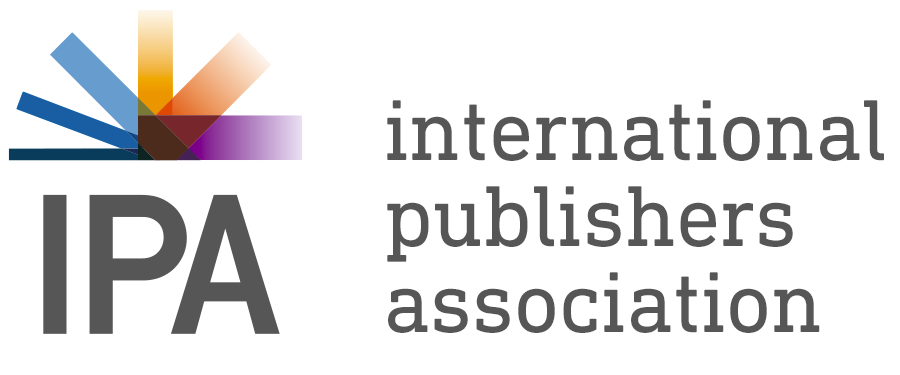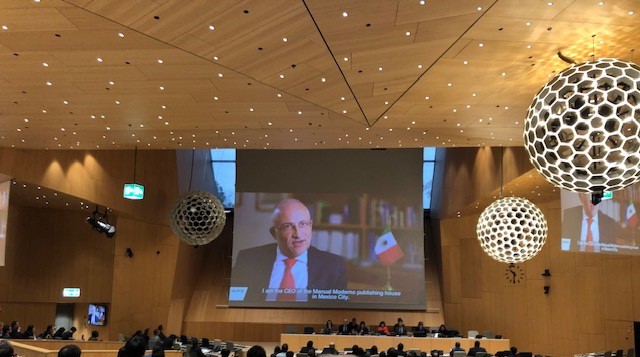Accessibility is a key focus at the IPA, and the current IPA President, Hugo Setzer, is leading the call for publishers to support inclusive publishing practices. I caught up with Hugo to find out more;
Michiel Kolman (MK): How did you become such a champion for accessible publishing?
Hugo Setzer (HS): I started to learn about the specific needs of the visually impaired community several years ago when I had the opportunity to attend a few workshops with blind people. At the same time, at my own company I had a coworker, Laura who was visually impaired. I discovered she was studying communications and couldn’t get her course books in an accessible format. This meant her family had to read the books aloud. So, when I began my role of Vice-President at IPA, I became interested in the Accessible Book Consortium (ABC), a joint initiative whose mission was to increase the number of accessible books worldwide. I personally support this goal and was delighted to join the board this year representing my own company, Manual Moderno.
How can other publishers get involved in the ABC?
There is a Chinese proverb that says, if you are facing in the right direction, you just have to keep on walking. For publishers, its important to know which direction to start and to help, the ABC have created a Charter for Accessible Publishing. This is a simple way for publishers to show their commitment to accessible publishing. It doesn’t mean that you have all your catalog available in accessible formats right now but it shows a commitment to start your journey towards reaching that ultimately goal. The Charter helps you know in which direction to look and I am encouraging everyone to read and sign up to its principles.
Manual Moderno, your own publishing company, is a signatory. What did you do there to implement inclusive publishing?
We signed the Charter for Accessible Publishing to remind us of our commitment towards producing books in accessible formats. In fact, until recently we didn’t have any titles available in accessible formats. Now, I am proud that we have 10 titles available in accessible formats with plans in place for more. Being accessible is not so difficult when you first have the commitment of your company and your own team. Then it is about integrating accessibility features into your publishing workflow.
Practically speaking, there are different approaches publishers can take to implement accessible features into their products. Is there a preferred approach and why?
Yes. There are two main approaches that publishers can take. Firstly, you can decide that all publications will be “born accessible”; accessible for the print disabled from the start. The second approach is to work with specialized organizations who help convert digital files to suitable formats after publication. The nice thing about producing born accessible titles is that for the visually impaired person you don’t have to waste time searching or requesting an accessible format nor wait for it to be converted. Saying that, it is estimated that less than 10% of all published books have some kind of accessible format. There is such a great demand for accessible titles and so few available that I think publishers should work on both approaches.
Some publishers still have some hesitations around accessible publishing: what are they and how do you address them?
I think accessible publishing is a concept that is not fully understood. It tends to be perceived as being either extremely difficult and expensive, but it is not. It is not too difficult to implement accessibility features into the publishing workflow and the incremental cost are not too high. I found this is especially true for text-only titles which have very few images and tables. I recommend publishers start there. The ABC website features a number of resources for publishers such as the Books For All starter kit, online training and best practice guidelines.
Also, many colleagues mistakenly think they must make the accessible titles available for free. This is certainly not the case. Visually impaired people, just like you and me, want to buy any title that they wish to read. Rather, for publishers, accessible publishing presents an opportunity to tap into an additional market while broadening the diversity of books available to those with print disabilities.
How important do you think communications are to raising awareness of accessible publishing and ultimately increasing the number of books available in accessible formats?
Communications is key for this endeavor. The IPA are constantly working with the ABC to find innovative ideas to communicate the importance of accessible publishing. For example, we have been vocal in trying to encourage every publishing house to sign the Charter for Accessible Publishing. I have personally reached out to many contacts and we recorded a short video and given media interviews on the topic. As a result, the number of signatories has been steadily increasing, but we still need more publishers on board. I would invite all fellow publishers to sign the Charter.

